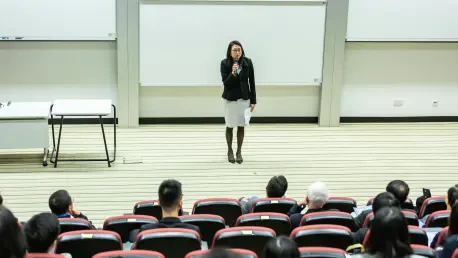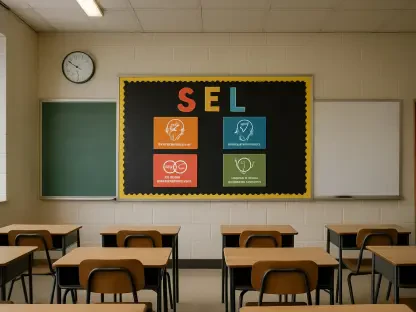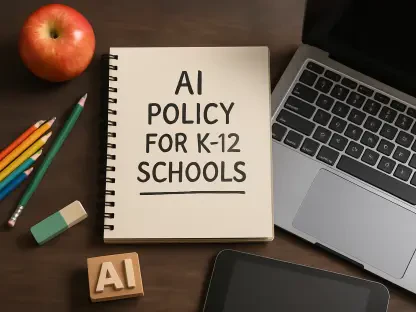Education in modern times faces complex challenges and opportunities that require innovative solutions to foster student success and teacher development. Among the strategies to address these challenges, Professional Learning Communities (PLCs) have emerged as pivotal frameworks for cultivating collaboration and continuous improvement in schools. These structured, collaborative groups focus on analyzing student data, co-designing curriculum, and reflecting on teaching strategies. The transformative potential of PLCs lies in their structured approach to professional learning and their ability to drive meaningful change in educational settings.
Foundation of PLCs
Building a Collaborative Culture
The success of PLCs hinges on fostering a collaborative culture that encourages open communication and shared goals among educators. A collaborative environment is essential for teachers to feel comfortable sharing insights, challenges, and innovative ideas. The establishment of such a culture involves setting explicit norms and goals, which guide the community’s efforts and maintain focus on student outcomes. By cultivating an atmosphere of mutual support and trust, PLCs can transform traditional silos of solitary teachers into dynamic teams dedicated to achieving common educational objectives.
In creating a collaborative culture, it is vital to set clear expectations for interactions within the group. This requires formalizing a set of norms regarding communication, participation, and mutual respect. Such guidelines, agreed upon by all members, serve as a foundation for constructive dialogue and ensure that discussions remain productive and focused on the ultimate goal of improving student learning. Collective responsibility for student success becomes a driving force within PLCs, as teachers unite under a shared vision and leverage their collective expertise to address challenges.
The Role of Data in PLCs
Data plays a pivotal role in the operations of effective PLCs, serving as the basis for informed decision-making and continuous improvement. PLCs prioritize data-driven discussions to guide teaching practices and refine instructional strategies. This process involves analyzing various types of data, including test scores, student work samples, and engagement metrics, to identify trends, assess instructional efficacy, and pinpoint areas for growth. The emphasis on data usage helps educators focus on actual student needs rather than subjective preferences, leading to targeted interventions and enhanced outcomes.
To make the most of data within PLCs, educators must approach it with a growth mindset, viewing data as a tool for learning and development rather than a judgment of competence. This mindset encourages openness to change and a willingness to experiment with new teaching methods informed by data insights. Teams within PLCs collaborate to interpret data through regular meetings, where they engage in meaningful discussions to understand its implications and plan instructional adjustments accordingly. This collective approach ensures that all perspectives are considered and decisions are grounded in evidence, ultimately benefiting student achievement.
Enhancing Teacher Development
Shared Leadership and Responsibilities
Empowering educators through shared leadership within PLCs is fundamental to fostering a sense of ownership and accountability. In shared leadership models, responsibilities for leading sessions, facilitating discussions, and analyzing data are distributed among members. This approach not only relieves the burdens often placed on a few individuals but also encourages active participation and leadership development across the teaching community. Through shared leadership, educators gain valuable skills in collaboration, decision-making, and communication, enhancing both personal growth and group efficacy.
The practice of rotating leadership roles within PLCs ensures diversity in meeting facilitation styles and keeps the engagement dynamic. As different educators take on leadership roles, they bring unique perspectives and approaches, enriching the group’s collective knowledge. This practice encourages teachers to step out of their comfort zones, fostering professional growth and creating a more resilient learning community. As educators experience leading and collaborating on issues of mutual interest, they develop a deeper sense of commitment to the shared goals of the PLC, further strengthening the community’s impact.
Celebrating Achievements
Recognizing and celebrating the accomplishments of both teachers and students within PLCs is crucial for maintaining morale and momentum. Celebrations of progress, whether through improved student performances or successful instructional innovations, create positive reinforcement and encourage continued effort. Publicly acknowledging these achievements not only boosts individual and team spirits but also fosters a culture of appreciation and motivation. Highlighting success stories within the education community serves as tangible evidence of the positive outcomes generated by dedicated PLC efforts.
Celebrations within PLCs can take various forms, from informal acknowledgments during meetings to more formal recognitions at school-wide events. Sharing these achievements across the broader educational community can inspire colleagues and even influence district-wide practices. By highlighting the positive impact of their collaborative efforts, PLCs strengthen their reputation as catalysts for change and exemplars of effective professional development. Recognition of achievements sets a precedent for sustained commitment and innovation, ensuring PLCs remain dynamic forces within educational settings.
Future of PLCs in Education
Sustainability and Growth
The sustainability of PLCs as transformative agents in education depends on deliberate efforts to maintain their vitality and relevance. As educational landscapes evolve, PLCs must adapt by continually updating their methods and areas of focus. This requires a commitment to ongoing professional learning, where educators actively seek new knowledge and skills to address emerging challenges. Ensuring the growth of PLCs involves providing opportunities for professional development that are aligned with current educational trends and the specific needs of the school community.
Sustaining PLCs also requires institutional support in terms of resources, time, and recognition. Schools and districts must prioritize the facilitation of PLC initiatives by allocating time within the schedule for collaboration and reflection. Providing access to digital tools and resources can enhance the effectiveness of remote and in-person collaboration, ensuring that PLCs function seamlessly. Continuous evaluation of PLC processes and outcomes is essential to assess effectiveness and identify areas for improvement, fostering a culture of reflection and adaptability.
Aligning with Broader Educational Goals
In today’s educational landscape, addressing the multifaceted challenges and opportunities is crucial for advancing student success and enhancing teacher development. Against this backdrop, Professional Learning Communities (PLCs) have gained prominence as essential frameworks that promote collaboration and sustained improvement in schools. These PLCs are organized, cooperative groups where educators come together to scrutinize student performance data, jointly create curriculum content, and assess teaching methods. The real transformative power of PLCs lies in their systematic approach to professional growth, offering educators a platform to engage in reflective practices and exchange ideas. This collaboration not only supports teacher development but also brings about significant changes in educational environments, fostering an atmosphere where both teachers and students can thrive. By encouraging teamwork and shared responsibility, PLCs ultimately drive innovation and positive outcomes, making them a vital tool in modern education reform efforts.









